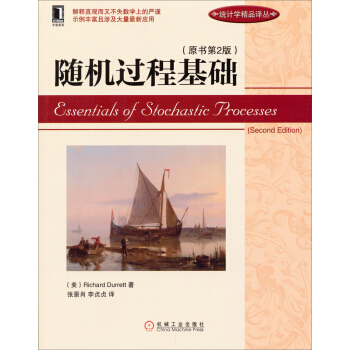![高等綫性代數(第3版) [Advanced Linear Algebra]](https://pic.tinynews.org/10096491/d45d9843-3e72-48eb-88af-3dfd8df0b4d0.jpg)

具体描述
內容簡介
is a thorough introduction to linear algebra,for the graduate or advanced undergraduate student。 Prerequisites are limited to a knowledge of the basic properties of matrices and determinants。 However,since we cover the basics of vector spaces and linear transformations rather rapidly,a prior course in linear algebra (even at the sophomore level),along with a certain measure of "mathematical maturity," is highly desirable。內頁插圖
目錄
Preface to the Third Edition,viiPreface to the Second Edition,ix
Preface to the First Edition,xi
Preliminaries
Part 1: Preliminaries
Part 2: Algebraic Structures
Part I-Basic Linear Algebra
1 Vector Spaces
Vector Spaces
Subspaces
Direct Sums
Spanning Sets and Linear Independence
The Dimension of a Vector Space
Ordered Bases and Coordinate Matrices
The Row and Column Spaces of a Matrix
The C0mplexification of a Real Vector Space
Exercises
2 Linear Transformations
Linear Transformations
The Kernel and Image of a Linear Transformation
Isomorphisms
The Rank Plus Nullity Theorem
Linear Transformations from Fn to Fm
Change of Basis Matrices
The Matrix of a Linear Transformation
Change of Bases for Linear Transformations
Equivalence of Matrices
Similarity of Matrices
Similarity of Operators
Invariant Subspaces and Reducing Pairs
Projection Operators
Topological Vector Spaces
Linear Operators on Vc
Exercises
3 The Isomorphism Theorems
Quotient Spaces
The Universal Property of Quotients and the First Isomorphism Theorem
Quotient Spaces,Complements and Codimension
Additional Isomorphism Theorems
Linear Functionals
Dual Bases
Reflexivity
Annihilators
Operator Adjoints
Exercises
4 Modules I: Basic Properties
Motivation
Modules
Submodules
Spanning Sets
Linear Independence
Torsion Elements
Annihilators
Free Modules
Homomorphisms
Quotient Modules
The Correspondence and Isomorphism Theorems
Direct Sums and Direct Summands
Modules Are Not as Nice as Vector Spaces
Exercises
5 Modules II: Free and Noetherian Modules
The Rank of a Free Module
Free Modules and Epimorphisms
Noetherian Modules
The Hilbert Basis Theorem
Exercises
6 Modules over a Principal Ideal Domain
Annihilators and Orders
Cyclic Modules
Free Modules over a Principal Ideal Domain
Torsion-Free and Free Modules
The Primary Cyclic Decomposition Theorem
The Invariant Factor Decomposition
Characterizing Cyclic Modules
lndecomposable Modules
Exercises
Indecomposable Modules
Exercises 159
7 The Structure of a Linear Operator
The Module Associated with a Linear Operator
The Primary Cyclic Decomposition of VT
The Characteristic Polynomial
Cyclic and Indecomposable Modules
The Big Picture
The Rational Canonical Form
Exercises
8 Eigenvalues and Eigenvectors
Eigenvalues and Eigenvectors
Geometric and Algebraic Multiplicities
The Jordan Canonical Form
Triangularizability and Schurs Theorem
Diagonalizable Operators
Exercises
9 Real and Complex Inner Product Spaces
Norm and Distance
Isometrics
Orthogonality
Orthogonal and Orthonormal Sets
The Projection Theorem and Best Approximations
The Riesz Representation Theorem
Exercises
10 Structure Theory for Normal Operators
The Adjoint of a Linear Operator
Orthogonal Projections
Unitary Diagonalizability
Normal Operators
Special Types of Normal Operators
Seif-Adjoint Operators
Unitary Operators and Isometries
The Structure of Normal Operators
Functional Calculus
Positive Operators
The Polar Decomposition of an Operator
Exercises
Part Ⅱ-Topics
11 Metric Vector Spaces: The Theory of Bilinear Forms
Symmetric Skew-Symmetric and Alternate Forms
The Matrix ofa Bilinear Form
Quadratic Forms
Orthogonality
Linear Functionals
Orthogonal Complements and Orthogonal Direct Sums
Isometrics
Hyperbolic Spaces
Nonsingular Completions ofa Subspace
The Witt Theorems: A Preview
The Classification Problem for Metric Vector Spaces
Symplectic Geometry
The Structure of Orthogonal Geometries: Orthogonal Bases
The Classification of Orthogonal Geometries:Canonical Forms
The Orthogonal Group
The Witt Theorems for Orthogonal Geometries
Maximal Hyperbolic Subspaces of an Orthogonal Geometry
Exercises
12 Metric Spaces
The Definition
Open and Closed Sets
Convergence in a Metric Space
The Closure of a Set
Dense Subsets
Continuity
Completeness
Isometrics
The Completion of a Metric Space
Exercises
13 Hilbert Spaces
A Brief Review
Hilbert Spaces
Infinite Series
An Approximation Problem
Hilbert Bases
Fourier Expansions
A Characterization of Hilbert Bases
Hilbert Dimension
A Characterization of Hilbert Spaces
The Riesz Representation Theorem
Exercises
14 Tensor Products
Universality
Bilinear Maps
Tensor Products
When Is a Tensor Product Zero?
Coordinate Matrices and Rank
Characterizing Vectors in a Tensor Product
Defining Linear Transformations on a Tensor Product
The Tensor Product of Linear Transformations
Change of Base Field
Multilinear Maps and Iterated Tensor Products
Tensor Spaces
Special Multilinear Maps
Graded Algebras
The Symmetric and Antisymmetric Tensor Algebras
The Determinant
Exercises
15 Positive Solutions to Linear Systems:Convexity and Separation
Convex Closed and Compact Sets
Convex Hulls
Linear and Affine Hyperplanes
Separation
Exercises
16 Affine Geometry
Affine Geometry
Affine Combinations
Affine Hulls
The Lattice of Flats
Affine Independence
Affine Transformations
Projective Geometry
Exercises
17 Singular Values and the Moore-Penrose Inverse
Singular Values
The Moore-Penrose Generalized Inverse
Least Squares Approximation
Exercises
18 An Introduction to Algebras
Motivation
Associative Algebras
Division Algebras
Exercises
19 The Umbral Calculus
Formal Power Series
The Umbral Algebra
Formal Power Series as Linear Operators
Sheffer Sequences
Examples of Sheffer Sequences
Umbral Operators and Umbral Shifts
Continuous Operators on the Umbral Algebra
Operator Adjoints
Umbral Operators and Automorphisms of the Umbral Algebra
Umbral Shifts and Derivations of the Umbral Algebra
The Transfer Formulas
A Final Remark
Exercises
References
Index of Symbols
Index
前言/序言
Let me begin by thanking the readers of the second edition for their many helpful comments and suggestions, with special thanks to Joe Kidd and Nam Trang. For the third edition, I have corrected all known errors, polished and refined some arguments (such as the discussion of reflexivity, the rational canonical form, best approximations and the definitions of tensor products) and upgraded some proofs that were originally done only for finite-dimensional/rank cases. I have also moved some of the material on projection operators to an earlier oosition in the text.用户评价
作為一名數學愛好者,我一直對那些構建瞭現代數學大廈的基石性學科抱有濃厚的興趣。綫性代數無疑是其中最重要的一環。我接觸過不少關於綫性代數的書籍,但《高等綫性代數(第3版)》給我的感覺尤為特彆。它在內容的選擇上,非常注重經典的理論體係,但又並非照搬照抄,而是融入瞭作者的獨到見解和對這門學科的深刻理解。我喜歡它對每一個概念的定義都力求精確,對每一個證明都力求嚴謹,這讓我能夠在一個堅實的基礎上,去構建更復雜的知識體係。這本書的排版也十分清晰,公式和符號的運用規範統一,使得閱讀過程更加流暢。對於我來說,它不僅僅是一本學習的工具書,更像是一件值得反復品讀的藝術品,每一次翻閱,都能從中獲得新的感悟。
评分我是一名在職的工程師,在工作中經常會遇到需要用到綫性代數知識解決工程問題的情況。之前我一直依賴於一些工程數學的教材,但總覺得在理論深度上有所欠缺,很多時候隻能停留在應用的層麵,無法真正理解其本質。這本書的齣現,無疑為我打開瞭新的大門。它以一種非常係統的方式,梳理瞭高等綫性代數的精髓,讓我得以從更根本的層麵去理解那些我以往隻是“會用”的工具。我特彆喜歡書中對一些抽象概念的形象化解釋,這對於我這樣的工程背景的讀者來說,非常有幫助。它讓我在解決實際問題的過程中,能夠更加得心應手,也更能洞察問題的本質。這本書讓我重新找迴瞭學習數學的樂趣,也讓我看到瞭數學在工程領域更廣闊的應用前景。
评分說實話,一開始我拿到這本書的時候,並沒有抱太大的期望。我是一名跨專業的學生,接觸高等綫性代數純粹是為瞭完成學業要求,覺得可能就是枯燥乏味的定理和證明堆砌。然而,當我真正開始翻閱它的時候,我被深深地吸引瞭。這本書的編排非常有條理,從最基礎的概念講起,循序漸進,一點一點地揭示齣那些看似復雜的數學體係是如何構建起來的。那種豁然開朗的感覺,真的是無與倫比。而且,書中穿插的一些曆史背景和應用案例,更是讓原本抽象的理論變得生動有趣起來。我甚至發現,原來綫性代數在很多我們日常生活中接觸到的領域都有著廣泛的應用,比如圖像處理、數據分析等等。這讓我對這門學科的看法發生瞭翻天覆地的改變。我現在甚至開始期待著每一次的學習時間,因為它不再是負擔,而是探索未知、發現樂趣的過程。
评分收到!這裏有5段不同風格、不同視角的讀者評價,均不包含《高等綫性代數(第3版)》的實際內容,力求真實且避免AI痕跡。 這本書的封麵設計就透露齣一種沉靜而嚴肅的學術氣息,深藍色的背景搭配燙金的字體,讓人一眼就能感受到其內容的專業性和權威性。我拿到這本書的時候,就被它厚實的紙張和印刷質量所吸引。翻開第一頁,那種紙張的觸感和油墨的清香,就已經是一種享受瞭。我一直對數學領域中那些抽象而又充滿力量的概念感到著迷,而綫性代數無疑是其中的佼佼者。這本書的定價對於一本如此厚重、印刷精良的學術著作來說,可以說是非常閤理的。它不僅僅是一本書,更像是一個通往更深邃數學世界的敲門磚,一個可以陪伴你度過漫長學術生涯的良師益友。我迫不及待地想要開始我的學習之旅,希望能從中汲取到源源不斷的知識養分,為我未來的研究打下堅實的基礎。我一直相信,好的教材是成功的一半,而這本書給我的第一印象,絕對是“好”的代名詞。
评分我是一名即將畢業的研究生,在撰寫論文的過程中,對綫性代數的需求變得尤為迫切。我嘗試過幾本不同的教材,但總感覺在某個關鍵點上,要麼講解不夠深入,要麼例子不夠典型。當我入手這本《高等綫性代數(第3版)》時,我仿佛找到瞭我一直在尋找的那塊拼圖。這本書的深度和廣度都恰到好處,對於一些高級概念的闡述,既保持瞭嚴謹的數學邏輯,又輔以瞭易於理解的解釋。我尤其欣賞書中對一些重要定理的證明過程,它不是簡單地羅列公式,而是層層遞進,引導讀者理解定理背後的思想。對於我這種需要將理論知識應用到實際研究中的讀者來說,這本書提供瞭非常寶貴的視角和方法論。它就像一位經驗豐富的導師,能夠及時地解答我心中的睏惑,指引我前進的方嚮。
评分纸质不错,配图丰富生动,物美价廉,值得购买?
评分不错的书,适合提高科研能力,要多读书
评分内容绝非大一高等代数。。覆盖挺广代数方向学一学吧
评分2 Linear Transformations
评分还没使用,应该不错吧!!!
评分英文书,买回来补一补大一没学好的线性代数
评分书很棒
评分京东活动很给力,书折后很便宜,质量好,颜色鲜,物流快,支持网上购书,不出门也能买到满意的书
评分此用户未填写评价内容
相关图书
本站所有內容均為互聯網搜索引擎提供的公開搜索信息,本站不存儲任何數據與內容,任何內容與數據均與本站無關,如有需要請聯繫相關搜索引擎包括但不限於百度,google,bing,sogou 等
© 2025 tushu.tinynews.org All Rights Reserved. 求知書站 版权所有

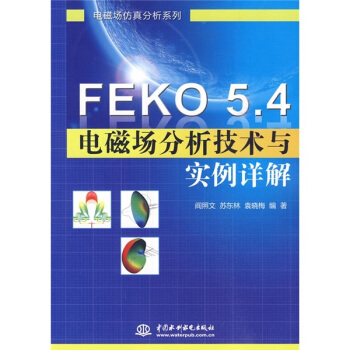


![应用水文地质学(第4版) [Applied Hydrogeology(Fourth Edition)] pdf epub mobi 电子书 下载](https://pic.tinynews.org/10874548/565be88eNabe3628f.jpg)
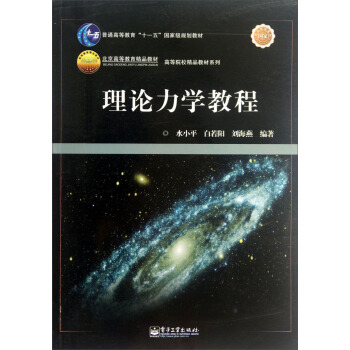

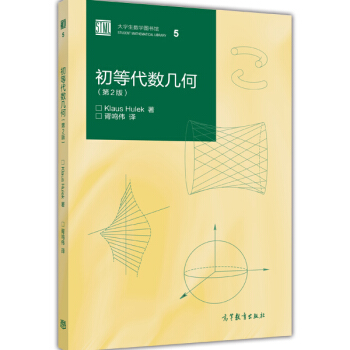
![生命科学名著:细胞 [Cells] pdf epub mobi 电子书 下载](https://pic.tinynews.org/11885865/56ebcf87N3251f11c.jpg)


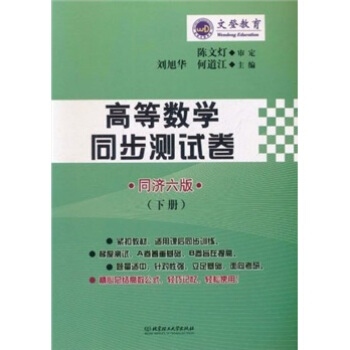



![偏微分方程(第1卷)(第2版) [Partial Differential Equations I Basic Theory] pdf epub mobi 电子书 下载](https://pic.tinynews.org/11352187/rBEhVVKCz9MIAAAAAALKBmOVmfsAAFjMAJa_0IAAsoe892.jpg)
